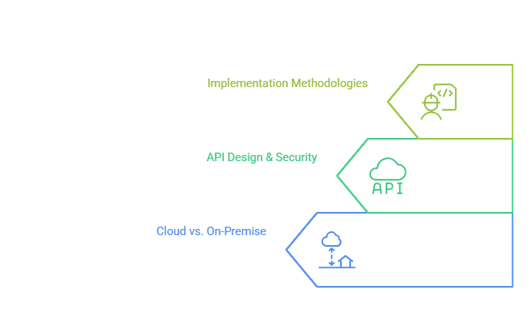
The pharmaceutical industry is undergoing a fundamental transformation where traditional boundaries between clinical development and post-market pharmacovigilance are dissolving. As regulatory expectations evolve and patient safety remains paramount, integrating clinical and pharmacovigilance (PV) systems has become a strategic imperative for organizations seeking to optimize drug safety throughout the product lifecycle.
This integrated approach shifts from siloed operations to a unified safety ecosystem that enables seamless data flow, enhanced signal detection, and more informed risk-benefit assessments. The convergence creates opportunities for comprehensive safety monitoring, improved regulatory compliance, and better patient outcomes.
Understanding the principles, challenges, and best practices of systems integration is essential for pharmaceutical professionals navigating this complex landscape. This introduction provides a foundational overview of how organizations can successfully integrate clinical and PV systems to achieve truly end-to-end drug safety management.
The evolution toward integrated clinical and PV systems reflects fundamental changes in how the pharmaceutical industry approaches drug safety. Traditional compartmentalized approaches are giving way to holistic strategies that recognize safety as a continuous process spanning the entire product lifecycle.
Multiple factors converge to make systems integration necessary for modern pharmaceutical operations. Regulatory authorities increasingly expect comprehensive safety data spanning from early development through post-market surveillance. The FDA’s emphasis on real-world evidence and EMA’s focus on lifecycle safety management exemplify this trend.
The exponential growth in data volume and complexity further necessitates integrated approaches. Modern drug development generates vast amounts of safety data from clinical trials, registries, electronic health records, and patient-reported outcomes. Managing this data effectively requires systems that can seamlessly integrate, analyze, and act upon information from multiple touchpoints.
The financial implications of fragmented safety systems extend beyond operational inefficiencies. Delayed signal detection, duplicated efforts, and regulatory compliance failures can result in significant costs, including delayed approvals, market withdrawals, and reputational damage. Integrated systems provide pathways to mitigate these risks while optimizing resource allocation.
Furthermore, integrated systems enable more sophisticated analytics and predictive modeling capabilities. By combining clinical trial data with real-world evidence, organizations can develop more nuanced understanding of drug safety profiles and implement proactive risk management strategies.
Regulatory authorities worldwide increasingly recognize the value of integrated safety approaches. The ICH E2E guideline on pharmacovigilance planning emphasizes coordinated safety monitoring throughout the product lifecycle. Similarly, FDA’s REMS programs often require integration of clinical and post-market safety data to ensure effective risk mitigation.
This regulatory alignment creates both opportunities and obligations for pharmaceutical companies. Organizations that successfully integrate their systems are better positioned to meet regulatory expectations while gaining competitive advantages through more efficient safety operations.
The landscape encompasses a complex ecosystem of databases, applications, and workflows that must work together to support comprehensive drug safety management. Understanding this landscape is crucial for developing effective integration strategies.
Clinical development systems traditionally focus on controlled environments where data collection follows strict protocols and predefined endpoints. These systems include Electronic Data Capture (EDC) platforms, Clinical Trial Management Systems (CTMS), and safety databases designed for clinical trial adverse event reporting.
The architecture reflects the structured nature of clinical research, with standardized data formats, rigorous quality controls, and well-defined workflows. However, this structure can create challenges when integrating with more flexible PV systems that must accommodate diverse real-world data sources.
Clinical systems typically employ standardized data formats such as CDISC standards, which facilitate data exchange and regulatory submissions. The adoption of these standards has improved data quality and consistency within clinical development.
PV systems are designed to handle the complexities of real-world safety monitoring, including spontaneous adverse event reports, literature surveillance, and signal detection activities. These systems must accommodate diverse data sources with varying levels of completeness and quality.
Modern PV systems incorporate sophisticated case management capabilities, automated signal detection algorithms, and regulatory reporting functionalities. The challenge lies in connecting these capabilities with clinical development systems to create a unified safety monitoring framework.
PV systems must process data from numerous sources, including healthcare providers, patients, regulatory authorities, and literature sources. This diversity creates unique challenges for data standardization and quality assurance that differ significantly from the controlled environment of clinical trials.
Effective integration requires comprehensive strategies for data flow management that ensure information is seamlessly transferred between systems while maintaining data quality and regulatory compliance. These strategies must address both technical and operational aspects of integration.
The foundation of successful integration lies in robust data mapping and standardization processes. Clinical and PV systems often use different data models and terminology, requiring sophisticated mapping approaches to ensure accurate data translation.
Critical elements of data standardization include:
Standardization efforts must balance the need for consistency with the flexibility required to accommodate different data sources and regulatory requirements.

Organizations must determine the appropriate balance between real-time data integration and batch processing based on their specific needs and technical capabilities. Real-time integration offers immediate data availability but requires more sophisticated technical infrastructure and may impact system performance.
Batch processing approaches provide greater control over data quality and system performance but may introduce delays in data availability. The choice depends on the criticality of specific data types and regulatory reporting requirements.
Effective integration requires robust master data management practices to ensure consistent patient, product, and investigator information across systems. This includes maintaining authoritative sources of truth for key data elements and implementing processes to synchronize updates across integrated systems.
Master data management becomes particularly critical when dealing with global operations where different regions may use different coding systems or have varying data requirements.
Achieving operational excellence in integrated clinical and PV environments requires sophisticated approaches to process management, quality assurance, and performance monitoring. Organizations must develop new capabilities that span traditional functional boundaries.
Integration success depends on harmonizing processes across clinical and PV functions to eliminate redundancies and ensure consistent approaches to safety data management. This requires careful analysis of existing workflows and development of new processes that leverage the capabilities of integrated systems.
Workflow design must consider the different operational rhythms of clinical development and post-market surveillance. Clinical trials operate on structured timelines with defined milestones, while PV operations must respond to unpredictable events and regulatory requirements.
Quality management in integrated environments requires comprehensive approaches that address both clinical and PV quality standards. This includes developing quality metrics that span the entire safety data lifecycle and implementing quality assurance processes that work across system boundaries.
The integration of quality management systems must consider different regulatory requirements for clinical and PV operations while maintaining overall coherence and efficiency.
Integrated systems require sophisticated performance monitoring capabilities that provide visibility into data flow, system performance, and operational efficiency. Key performance indicators must be developed to measure the effectiveness of integration efforts and identify opportunities for improvement.
Organizations should establish metrics that measure both technical performance and business outcomes. Essential KPIs for integrated clinical and PV systems include:
These metrics should be monitored continuously and reported to stakeholders to ensure integration objectives are being met and to identify areas for improvement.
The successful implementation of integrated clinical and PV systems requires careful selection of technology solutions and thoughtful approaches to system deployment. Organizations must balance technical capabilities with practical considerations such as cost, timeline, and organizational readiness.

Choosing the right technology platforms for integration involves evaluating multiple factors including technical capabilities, regulatory compliance features, vendor stability, and total cost of ownership. Organizations must consider both current needs and future requirements when making platform decisions.
Modern integration platforms offer various approaches including point-to-point connections, enterprise service buses, and cloud-based integration-as-a-service solutions. Each approach has advantages and limitations that must be carefully evaluated in the context of specific organizational requirements.
The choice between cloud-based and on-premise solutions significantly impacts integration strategies. Cloud solutions offer greater flexibility and scalability but may raise concerns about data security and regulatory compliance. On-premise solutions provide greater control but may limit integration capabilities and increase maintenance costs.
Hybrid approaches that combine cloud and on-premise components are increasingly popular, allowing organizations to leverage the benefits of both deployment models while addressing specific security and compliance requirements.
Application Programming Interfaces (APIs) are critical components of integrated systems, enabling real-time data exchange and system interoperability. Effective API design requires careful consideration of data security, performance, and versioning requirements.
Security considerations for integrated systems must address both data protection and system access controls. This includes implementing encryption for data in transit and at rest, managing user authentication and authorization, and maintaining audit trails for regulatory compliance.
Successful integration projects require structured implementation methodologies that manage technical complexity while minimizing operational disruption. Agile approaches are increasingly being adopted to provide flexibility and enable iterative improvements.
Implementation strategies must consider the phased rollout of integrated capabilities, allowing organizations to validate approaches and make adjustments before full deployment. This includes developing comprehensive testing strategies that verify both technical functionality and business process effectiveness.
Integrating clinical and pharmacovigilance systems is no longer a luxury—it’s a necessity for pharmaceutical companies striving to achieve end-to-end drug safety in an increasingly complex and regulated environment. This convergence empowers organizations to break down operational silos, enhance signal detection, and make more informed, lifecycle-wide safety decisions. By aligning technology, data standards, workflows, and regulatory expectations, integrated systems create a unified safety ecosystem that not only improves compliance but also drives better patient outcomes. As the industry continues to evolve, those who invest in seamless clinical-PV integration will be best positioned to lead in innovation, efficiency, and global trust.